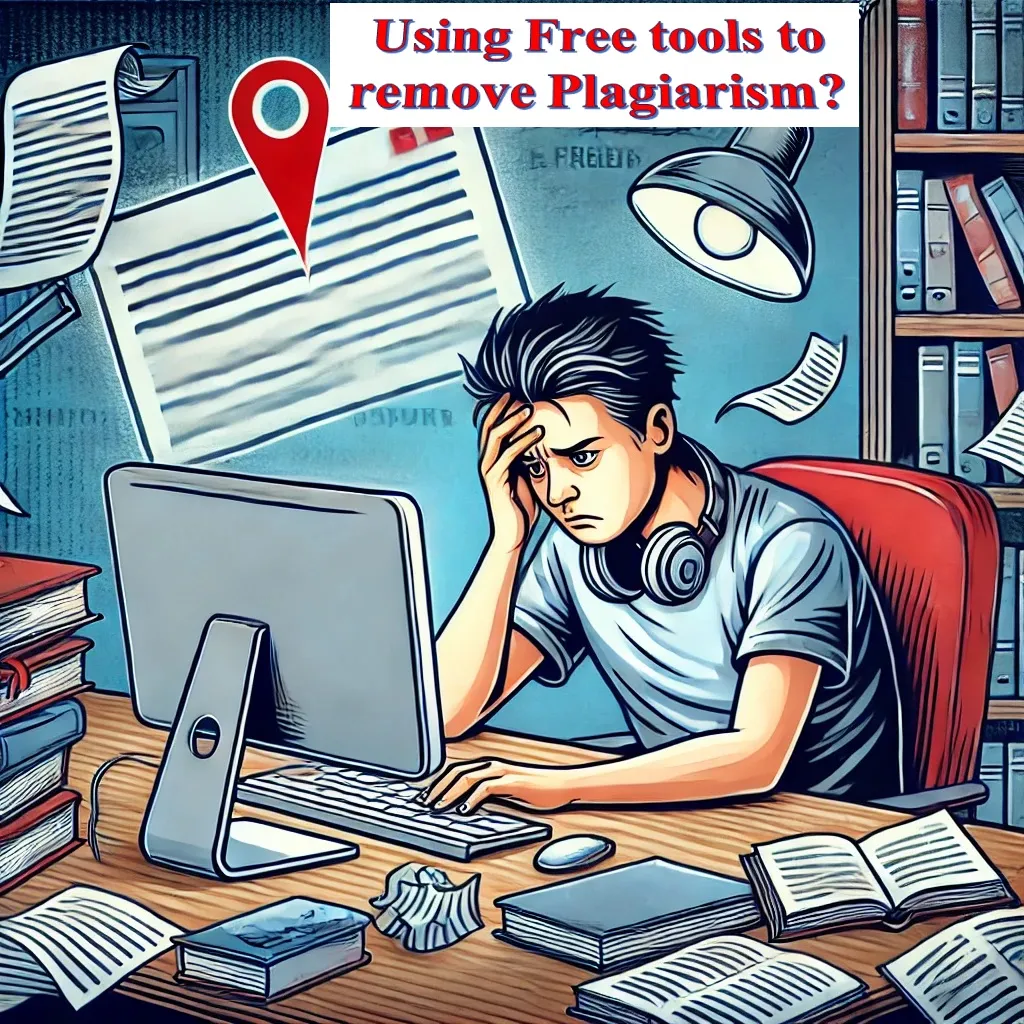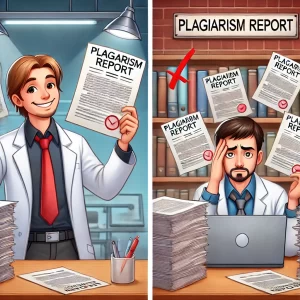Why free plagiarism removers don’t work: the risks of automated tools

With the increasing importance of originality in academic and professional writing, many people turn to free plagiarism removers to make their content unique. These automated tools promise to rewrite or paraphrase text to remove plagiarism. However, they often fail to produce high-quality results, leading to inaccurate reports, poor readability, and even new plagiarism risks.
This article explores why free plagiarism removers don’t work and the risks of relying on automated tools, along with the importance of professional and expert services to reduce plagiarism for ensuring plagiarism-free content.
Free plagiarism removers rely on basic word substitution
Most free plagiarism removal tools use simple word replacement techniques rather than actual content transformation. Instead of rewriting sentences meaningfully, they swap words with synonyms, making the content sound unnatural.
Why this is a problem:
- Results in awkward phrasing – Many synonyms don’t fit naturally in context, reducing readability.
- Fails to change sentence structure—plagiarism checkers still recognize the original structure.
- Does not remove deep plagiarism—changing words does not eliminate plagiarism if ideas remain unchanged.
💡 Solution: Instead of relying on automated word replacements, manual rewriting or expert plagiarism removal services ensure content remains both original and readable.
Automated tools fail to understand context
A major flaw of free plagiarism removers is their lack of contextual understanding. They cannot analyze the deeper meaning behind sentences, which leads to incorrect substitutions and misinterpretations.
Common issues with automated rewriting:
- Incorrect use of synonyms – The tool may replace words in ways that change the meaning of a sentence.
- Inconsistent phrasing – Some parts may be altered while others remain too similar to the original.
- Loss of logical flow – Paragraphs may become disjointed due to poor sentence restructuring.
💡 Solution: Hiring professional plagiarism removal experts ensures that rewriting maintains clarity, accuracy, and coherence.
Free tools cannot handle complex academic writing
Academic writing, such as research papers and theses, requires precise language and technical accuracy. Free plagiarism removers struggle with complex writing styles, leading to:
- Distorted technical terms – Important terminology may be replaced incorrectly.
- Loss of formal tone – The content may sound unprofessional after poor paraphrasing.
- Incomplete sentence changes – Some parts remain unchanged, leaving detectable plagiarism.
💡 Solution: Professional plagiarism removal services retain the integrity of academic content while ensuring originality.
High plagiarism risk due to poor rewording
Many free tools produce poorly rewritten text that is still flagged as plagiarized. Some simply change a few words, making it easy for Turnitin, Drillbit, and other plagiarism checkers to detect similarities.
Risks of using low-quality removers:
- Universities still detect plagiarism – Even minor similarities can get flagged.
- Self-plagiarism concerns – If previous work is poorly reworded, it may still be considered plagiarism.
- Unintentional duplication – Content might closely resemble existing sources due to ineffective rewriting.
💡 Solution: Manual rewriting and expert plagiarism reduction services ensure proper content transformation, reducing plagiarism risks effectively.
Some free tools steal and misuse user content
Many free online plagiarism removers come with privacy risks. Some services store or resell user content without permission.
Data security risks:
- Content theft – Your writing may be stored and reused elsewhere.
- Lack of confidentiality – Sensitive research or documents could be exposed.
- Risk of public indexing – Some free tools publish submitted content online, making it permanently available.
💡 Solution: Use trusted plagiarism removal services that prioritize data security and confidentiality.
Free tools often insert grammatical errors
Since automated removers lack human oversight, they often produce error-ridden content. This makes the text sound unnatural and difficult to read.
Common grammar issues:
- Sentence fragments – Poorly rewritten text often contains incomplete thoughts.
- Misuse of tenses – Automated tools fail to maintain correct verb tenses.
- Lack of coherence – Poorly paraphrased content may lack logical connections between sentences.
💡 Solution: Human proofreading and professional rewriting ensure error-free content that reads smoothly.
Free removers struggle with citations and references
Plagiarism is not just about text similarity—it also involves proper citation and referencing. Free plagiarism removers cannot:
- Ensure accurate citation formats (APA, MLA, Chicago, etc.)
- Recognize missing attributions for paraphrased content
- Avoid improper citation errors
💡 Solution: Use expert plagiarism removal services that maintain proper referencing while reducing plagiarism.
Why professional plagiarism removal services are better
Unlike free tools, professional plagiarism removal services ensure high-quality results by:
- Using advanced rewriting techniques – Experts rephrase content while keeping the original meaning intact.
- Maintaining writing clarity and professionalism – Ensuring that content remains readable and logical.
- Preserving technical accuracy – Avoiding incorrect term substitutions in academic writing.
- Ensuring data security – Protecting user content from misuse or unauthorized sharing.
💡 Solution: Instead of using unreliable free tools, invest in trusted plagiarism removal services to get accurate and plagiarism-free content.
Conclusion: why free plagiarism removers are not worth the risk
While free plagiarism removers may seem like a quick fix, they come with significant risks, including poor-quality rewriting, grammatical errors, security concerns, and plagiarism detection failures.
Key takeaways:
- Free tools use basic word replacement, which does not eliminate plagiarism.
- Automated tools fail to understand context, leading to inaccurate rewording.
- Free removers produce low-quality academic writing with errors and inconsistencies.
- Plagiarism detection tools still recognize poorly rewritten text as plagiarized.
- Some free services store and misuse content, posing security risks.
- Professional plagiarism removal services offer accurate, high-quality, and confidential rewriting solutions.
💡 Final tip: Always use a trusted plagiarism removal service to ensure original, high-quality content that passes plagiarism checks! 🚀

